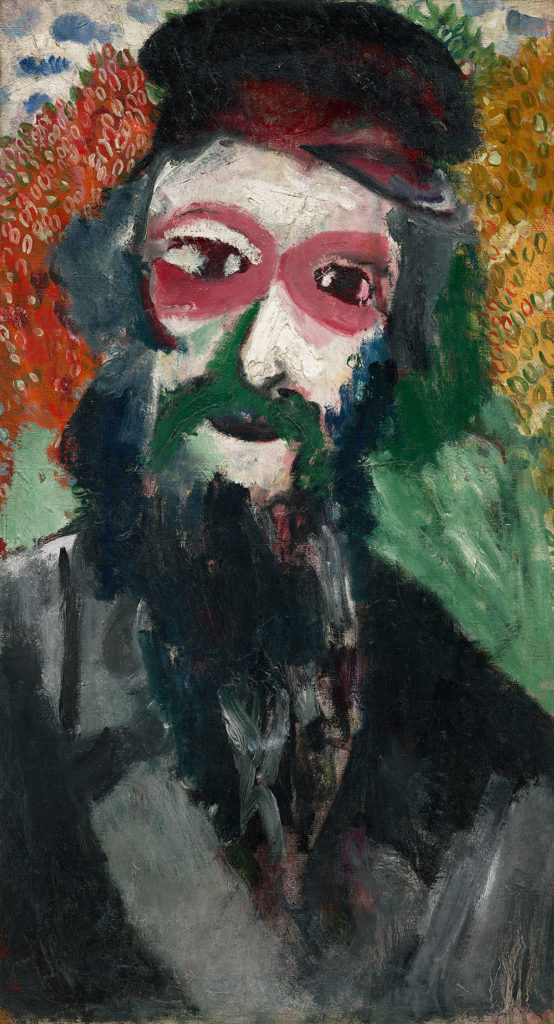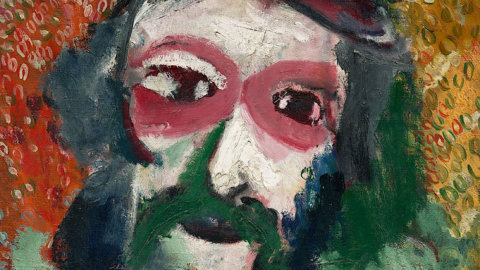The opera was performed in 1911, during a transformative period in the artist's career, the painting is among fifteen works of art that the French government returned earlier this year, part of an ongoing effort to return works to its museums that they were unjustly seized by the Nazi party during WWII. A long-valuable part of the collection of David Cender, a musical instrument maker of Łódź, Poland, the work was stolen from him in 1940 before being sent to Auschwitz with his family. In 1966 it had been repurchased by Chagall himself, who had a particular affinity for the painting, as it portrays his beloved father. In 1988, the Musée national d'art moderni, Center national d'art et de culture Georges-Pompidou in Paris received the painting for dating from the Chagall estate.
Estimated at $6-8 million, this is the first work from this group of fifteen returned artworks to appear at auction
Le Père is a rare and dynamic portrait that represents the artist's seminal transition from an art student in St. Petersburg to one of the defining figures of European Modernism. During the winter of 1911-1912, Chagall moved to La Ruche, an artists' commune on the outskirts of Montparnasse. The works he created over the next three years are among the most popular of his career, with his portraits of particular significance. Throughout his life, Chagall revitalized the inherited traditions of portraiture. He painted dreamy and fantastical portraits of lovers, religious figures, villagers and his beloved family throughout his seven-decade career. Le Père is an intimate portrait of the artist's father Zahar, a quiet and shy man who spent his entire life working in the same manual labor. Portraits of the artist's father are rare in Chagall's work. Far from the generalized symbols of lovers that dominated much of his later paintings, this early work is a strikingly personal and heartfelt depiction.
The first owner of this painting, David Cender, was a major musical instrument maker in Łódź, Poland
Cender created world-class pieces for the eminent musicians of the day, as well as being a musician and music teacher in his own right. In 1939, David married Ruta Zylbersztajn and their daughter Bluma was born soon after. Prior to 1939, 34% of Łódź's 665.000 inhabitants were Jews, and the city was a thriving center of Jewish learning. In the spring of 1940, David Cender and his family were forced from their home and moved to the ghetto, leaving behind many valuable possessions including their collection of art and musical instruments. While David survived the war, his wife, daughter and other relatives were killed in Auschwitz. Chagall repurchased the work in 1966 and it remained in his personal collection for the rest of his life. In 1988, the Musée national d'art moderni, Center national d'art et de culture Georges-Pompidou in Paris received by dating from the estate of Chagall Le Père together with 45 paintings and 406 drawings and gouaches. Ten years later, the work was deposited in the Musée d'art et d'histoire du Judaïsme in Paris, where it remained on display for twenty-four years.

The pears, 1911
Estimate: 6-8 million dollars
Earlier this year, on January 25, 2022, the French National Assembly unanimously approved a bill approving the return of the fifteen works of art; the bill was then approved by its Senate on February 15. The Minister of Culture, Roselyne Bachelot, praised the decision saying that not returning the works was "the denial of humanity [of these Jewish families], of their memory, of their memories". The historic passage of this bill marks the first time in more than seventy years that a government has initiated the restitution of works in public collections looted during World War II or acquired through anti-Semitic persecution.





